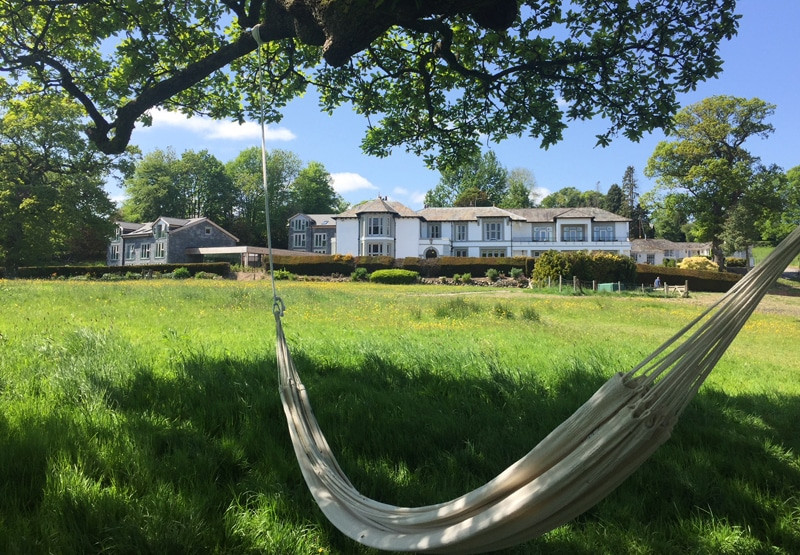The garden at Another Place
Over the last few years Another Place and Rampsbeck before it has gone through many changes. The constant has been our gardener, John. He has worked tirelessly to keep the garden looking beautiful throughout the seasons and changing style of the hotel.
Nestled between Ullswater on one side and the mighty Hellvellyn mountain range on the other, the setting for Another Place, The Lake is stunning. As soon as you arrive, it’s hard not to be seduced by the surroundings – across the water, Barton Fell, Hallin Fell and Loadpot Hill form an impressive line-up, and the crags towards Patterdale rise steeply from the lake. With such a backdrop, any garden is off to a good start. I met with John, who has tended the garden for over a decade and seen it through many changes, to find out what direction he is planning to take the garden now.

The last year has been one of extensive building work, including the completion of a whole new wing and Swim Club, inevitably impacting on the space, he tells me. Luckily the ancient and imposing clipped yew hedge remains, and creates a suitably formal feel to the hotel entrance. From here, the views of the hills and lake draw you down stone steps to an elegant clipped box parterre, again a hint of the previous style of the garden.
Beyond this things take a more informal turn, with extensive lawns and cut grass paths through meadows leading down to the lake. Games are put out for guests, including croquet and table tennis. Hints of the old garden remain in the mature rhododendrons, large Acer bed, pollarded Limes, and long herbaceous border stocked with Iris, Phlox and Geranium, punctuated with purple Hazels.
However, the focus is now on creating a garden for active relaxation. Following the paths along the shoreline with its mature walnut, oak, lime, spruce and elm trees, there is a feeling of space to rewind and relax. Guests are also encouraged to enjoy activities outdoors, either out on the water or up on the fells. And when it’s time to rest the poolside terrace is the perfect place to soak up the views where John was just in the process of planting up some floral displays for the summer.
As with all major landscaping projects, there have been plenty of challenges along the way, John tells me, from extensive drainage works to creating new parking space, but now the groundworks are largely behind him, he is really looking forward to developing the brand new kitchen garden. The plan is that it will supply the chefs with fresh produce, and already there were crops of potatoes, spring onions, shallots, French beans, and runner beans all looking good.
As well as growing more of their own produce, the hotel is also boosting its eco credentials by encouraging wildflowers for pollinators and wildlife. Areas of the meadows by the lake will be allowed to grow long in the summer, creating a more diverse habitat for insects, with meandering, mown grass paths allowing guests to explore.
The team have brought a new style of hotel to Ullswater, and the garden is following suit, There will be a lighter touch, less intervention and a more naturalistic feel in tune with the surroundings. I am really looking forward to seeing how it develops and grows from here.
Author: Bea Ray
Bea is a qualified garden designer, with a professional Diploma in Garden & Landscape Design with years of experience in designing and planting up gardens.
She loves to create imaginative, innovative gardens, using a variety of plants and landscaping materials focused around the changeable Lake District climate.
Get out there, relax back here. Book now to stay at Another Place, The Lake.